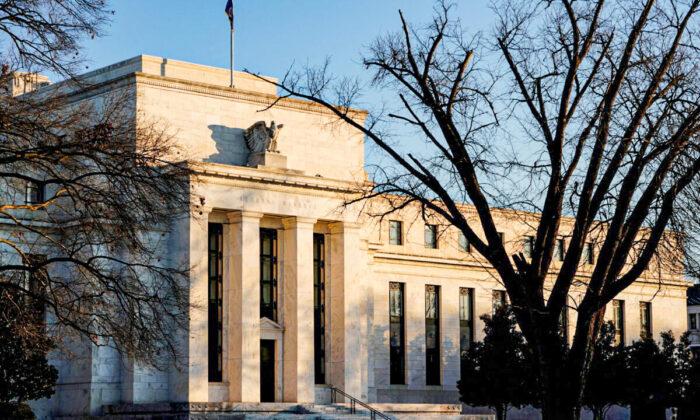In what can be best described as a classic western showdown, on one side is the Federal Reserve, which is tasked with managing the monetary system, and on the other side are market participants, who want to keep the good times rolling. Both gunslingers came prepared, as the Fed is eager to show it can put an end to higher inflation, while the market participants believe that they can break the Fed’s will.
The stakes are high, as inflation has spiraled out of control because of the global COVID-19 pandemic shutdown, extremely easy monetary policy, and repeated rounds of fiscal stimulus. Inflation was once a target the Fed couldn’t reach and has now become a political concern as prices are rising faster than wages. Unless inflation is brought under control, and quickly, history shows that periods of high inflation are often followed by deep recessions.
Market participants understand the probabilities are high that the Fed will trigger a recession by tightening monetary policy. With many investors overleveraged and overweighted into U.S. equities, another financial crisis or recession would likely cause stock prices to crash. Since the economy is already showing signs of slowing as the Fed begins to ramp up its rhetoric of rapidly tightening monetary policy, market participants must stop the Fed before it is too late.
The best way to stop the Fed is to convince the world that the Fed has lost control of the bond market, which it appears the Fed has a very tight leash on. Even though the Fed only has control over short-term interest rates, many believe that it can use its powers of expanding and contracting its bloated balance sheet to move yields across the Treasury curve at will. When in fact, the Fed lost control of the long end of the curve in the 1980s, as long-term rates are a function of growth and inflation expectations and not the Fed.
Market participants have driven interest rates higher at the fastest rate in history by selling and shorting bonds and convincing other investors that yields are at the bottom of a secular rally that will likely last for decades. This move higher in yields isn’t without its risks to the economy. Market participants need to break the Fed and get them to quickly capitulate, before higher rates end up triggering a debt or liquidity crisis on their own.
To validate higher rates, they must be met by increased lending demand. Thus far, homeowners are rejecting higher rates, as they show little interest in paying higher interest rates to refinance their homes. While credit card demand remains robust, the volume of credit card usage is too small compared with the behemoth of lending created by the housing market.
In the past, the Fed has responded to higher interest rates by easing monetary policy. In October 2019, the Fed started its fourth iteration of quantitative easing by purchasing Treasury Bills to bring short-term interest rates down. In turn, long rates crashed, not because of the Fed’s handiwork, but because of continued falling growth and inflation expectations that started in late 2018.
With inflation spiraling out of control, the Fed has little latitude to ease monetary policy without creating a massive amount of backlash from consumers and politicians, as many blame the Fed for inflation being as high as it is. However, the Fed does have the ability to lower rates without the appearance of easing, as there’s more than $1.7 trillion in Overnight Reverse Repurchase Agreements (ONRP) being parked at the Fed every night.
The Fed instituted its ONRP program to prevent short-term rates from falling below zero because of a persistent shortage of Treasury Bills, or pristine collateral. Rather than drive short-term rates negative as too much money was chasing an insufficient amount of collateral, the Fed offered Money Market Funds a guaranteed rate to park their excess cash at the Fed every night.
Now that short-term rates are no longer in danger of going negative, the Fed could simply wind down its ONRP program and force Money Market Funds to purchase T-Bills instead of parking money at the Fed. By doing this, the Fed could put downward pressure on short-term rates as $1.7 trillion would quickly need to find enough T-Bills to back all of the cash. For reasons unknown, the Fed chooses to continue this pandemic-era program without any indication of if—or when—it will end the program.
Both sides seem to be intent on holding their position as the Fed continues its rallying cry to gain support for raising the Federal Funds Rate at its April meeting and beginning to unwind its balance sheet later this summer. Market participants are becoming increasingly desperate to get the Fed to pivot, but thus far, lower stock prices haven’t caused the Fed to flinch. With history as a guide, the likely outcome is that the Fed is going to tighten monetary policy until the economy recesses and market participants will once again find themselves at the losing end of a showdown with the Fed.





